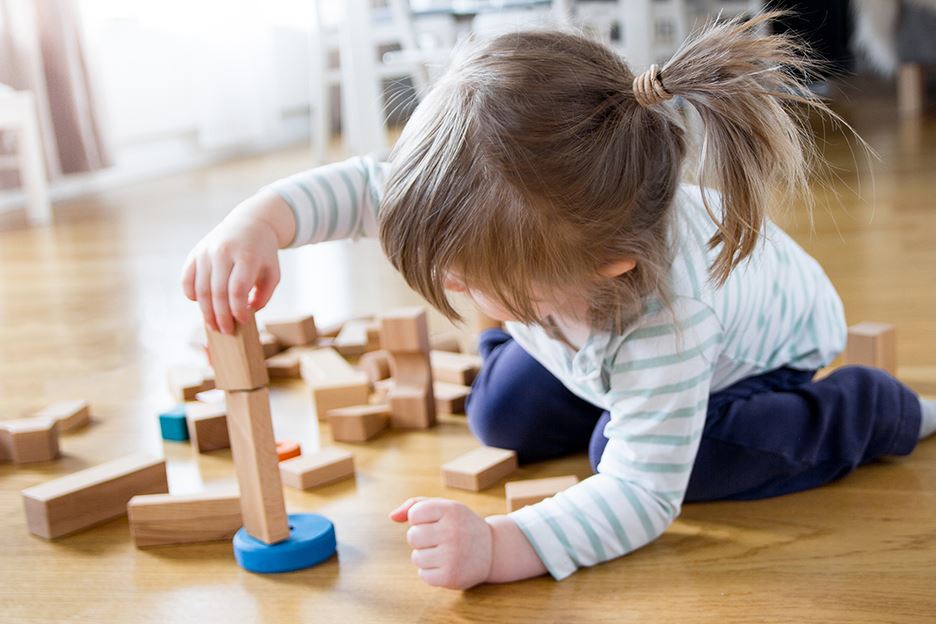Toys 095
The product group covers toys that consist of plastic, foam, silicone, rubber, textile, fur, leather, metal, paper, cardboard, wood, bamboo, or wood-based boards. Electronic toys, disposable toys, balloons, toys with liquid parts (also encapsulated) and toys that are attached to or includes food cannot be certified with the Nordic Swan Ecolabel.
The materials included in the toys must comply with environmental and chemical requirements that are stricter than the EU Toys Directive. There are ban on using several substances and environmental requirements for the individual material types. At the same time, the requirements promote circular economy.
The requirements include:
- Documentation of compliance with the requirements of the EU Toys Directive.
- Environmental and health properties of the chemicals used in the materials and in the surface treatments.
- Prohibition on the use of substances that can cause cancer, damage genes, or damage our reproductive capacity, as well as bans on heavy metals, perfumes, nanoparticles, phthalates and bisphenol A, B, F, S and AF.
- Use of materials that meet a variety of requirements; among other things, cotton fibers must be organic or recycled, metal materials must contain a high proportion of recycled metal or metal made with lower climate footprints, plastics must be recyclable, and a high proportion of wood from certified sustainable managed forests.
- Design of packaging – and both quantity and type of material for the packaging.
- Compliance with the International Labour Organisation (ILO) Conventions.
-
Welcome to apply for a Nordic Swan Ecolabel licence!
This is how you do:
- Read the application guide.
- Log in to the Nordic Ecolabelling Portal.
- Start your application.
If this is the first time you are applying, the authorized signatory must fill in your company information and approve the application conditions. In this way, you get login to the portal and the right to assign access to other colleagues.
To the Nordic Ecolabelling Portal
Some special cases can not be done in the Nordic Ecolabelling Portal. Contact your advisor for such cases. More information can be found on "Application step by step".
-
Valid from 1 January 2024 Amount excluding VAT Application fee
Application for a new licence 3 251 EUR Application for a renewed licence when the requirements have been tightened 1 625 EUR Annual licence fee
The licence fee for the Nordic Swan Ecolabelled products is based on their turnover in the Nordic countries The fee is 0.3% of the products' turnover in the Nordic countries up to 30 million EUR.
The fee is 0.05% of the products' turnover in the Nordic countries for the amount exceeding 30 million EUR.Minimum fee in the Nordic countries 2 167 EUR per year. Fixed fee that is added for sales outside the Nordic countries 2 167 EUR per year if the turnover exceeds 300 000 EUR. Fee for extension / change of licence
Fixed fee that is charged depending on how long the work takes.
Up to 4 hours 406 EUR 4–8 hours 812 EUR 8 or more hours 1 625 EUR Fee for on-site inspections
One on-site inspection in the Nordic countries is included when applying for a new or renewed licence.
Additional on-site inspection within the Nordic countries 541 EUR per visit. On-site inspection outside the Nordic region, but within Europe 1 625 EUR per visit. On-site inspection outside Europe 2 709 EUR per visit. Additional fee for on-site inspections lasting longer than one day 1 083 EUR per day.
Ecolabelling Sweden AB has no financial profit purpose and is financed through the fees above along with an annual government grant. The company is however liable for VAT according to article 56 of the European Council Directive 2006/112/EC.
Invoicing is made in SEK with the exchange rate from the first banking day of the year.
When both the applicant and the manufacturer are micro-enterprises, the application fee is reduced by 50%. A micro-enterprise is in this context defined as an enterprise with less than 10 employees and an annual turnover (of both ecolabelled and not ecolabelled products) below 2 million EUR.
Valid from 1 January 2023 Amount excluding VAT Application fee
Application for a new licence 3 114 EUR Application for a renewed licence when the requirements have been tightened 1 557 EUR Annual licence fee
The licence fee for the Nordic Swan Ecolabelled products is based on their turnover in the Nordic countries The fee is 0,3 % of the products' turnover in the Nordic countries up to 30 million EUR.
The fee is 0,05 % of the products' turnover in the Nordic countries for the amount exceeding 30 million EUR.Minimum fee in the Nordic countries 2 076 EUR per year. Fixed fee that is added for sales outside the Nordic countries 2 076 EUR per year if the turnover exceeds 300 000 EUR. Fee for extension / change of licence
Fixed fee that is charged depending on how long the work takes.
Up to 4 hours 389 EUR 4–8 hours 778 EUR 8 or more hours 1 557 EUR Fee for on-site inspections
One on-site inspection in the Nordic countries is included when applying for a new or renewed licence.
Additional on-site inspection within the Nordic countries 519 EUR per visit. On-site inspection outside the Nordic region, but within Europe 1 557 EUR per visit. On-site inspection outside Europe 2 595 EUR per visit. Additional fee for on-site inspections lasting longer than one day 1 038 EUR per day.
Ecolabelling Sweden AB has no financial profit purpose and is financed through the fees above along with an annual government grant. The company is however liable for VAT according to article 56 of the European Council Directive 2006/112/EC.
Invoicing is made in SEK with the exchange rate from the first banking day of the year.
When both the applicant and the manufacturer are micro-enterprises, the application fee is reduced by 50%. A micro-enterprise is in this context defined as an enterprise with less than 10 employees and an annual turnover (of both ecolabelled and not ecolabelled products) below 2 million EUR.
-
For new applications granted after 1 July, a fee reduction will apply for the first year. The minimum or maximum fee and any breakpoint will be multiplied by the result of the following formula: “number of remaining days in the year” x 2 / 365.
Breakpoint = Turnover where the percentage changes in the calculation of licence fee.
Minimum fee = the lowest licence fee Nordic ecolabelling annually invoices a company or a Group per product/ commodity group/ certifying country.Should a former holder of a license/registration continue to make use of the Nordic Ecolabel without being granted a new license/registration, the Nordic Ecolabelling organization reserves the right to claim financial compensation. The size of such compensation shall be equivalent to the turnover-based license fee that a licensee would have been required to pay for a license, and a financial penalty, the severity of which is determined by the extent and duration of the infringement as well as the damages that Nordic Ecolabelling may have incurred as a result of such misuse. Such a financial penalty should not normally be less than EUR 4,000 (four thousand). The Nordic Ecolabelling organizations may also take legal action against the infringement of the Nordic Ecolabel or if rules in the prevailing version of the Logo Guideline for the Nordic Ecolabel are not fulfilled.
-
-
-
Criteria documentDanish / 3.8
-
Writable declarationsDanish / 3.8
-
Criteria documentEnglish / 3.8
-
Writable declarationsEnglish / 3.8
-
-
3.7 ⇛ 3.8: Prolongation of criteria's validity
The validity period for the criteria has been extended. The new version is called 3.8 and is valid until December 31, 2026.
3.6 ⇛ 3.7: Adjustment of the criteria
Requirement O11 has been adjusted with an exception for the density requirement for TPE (Thermoplastic Elastomer), which constitutes a maximum of 20% by weight of the toy.
The new version is called 3.7 and is valid until 30 June 2026.
3.5 ⇛ 3.6 Adjustment of the criteria
Requirement O79 has been adjusted and an exemption for formaldehyde has been introduced under the condition that requirement O81 is fulfilled.
The new version is called 3.6 and is valid to June 30, 2026.
3.4 ⇛ 3.5 Adjustment of the criteria
A clarification has been added in O29: the requirement does not apply to natural latex.
The new version is called 3.5 and is valid to June 30, 2026.
3.3 ⇛ 3.4 Adjustment of the criteria
Several adjustments have been made:
- Requirement O64: an exception for butylhydroxytoluene (BHT) is introduced under certain conditions
- Requirement O58: a maximum of 0.5 mg/l zinc is allowed in wastewater as an alternative to closed-loop wastewater systems, but when more than 10 wt% of metal that is surface treated with zinc is in the toy only closed wastewater systems are allowed (requirement O59)
- Requirement O13: labels/stickers in polyethylene (PE) are allowed on toys (parts) in polypropylene (PP).
The new version is called 3.4 and is valid to June 30, 2026.
3.2 ⇛ 3.3 Adjustment of the criteria
An adjustment in requirements O59 and O60 for production of steel and aluminium regarding traceability, which can now be verified using mass balance or by major suppliers.
The new version is called 3.3 and is valid to June 30, 2026.
3.1 ⇛ 3.2 Adjustment of the criteria
An adjustment in requirement O22 where an alternative method EN 13130 for testing styrene was introduced. The new version is called 3.2 and is valid until June 30th 2026.
3.0 ⇛ 3.1: Adjustment of the criteria
The following requirements have been adjusted:
- O39 regarding flame retardants.
- O13 and O87 regarding requirements for labels / decals in paper.
- O87 regarding the possibility of washing labels from plastic packaging.
The new version is called 3.1.
3.0: New criteria generation
Version 3.0 of Nordic Ecolabelling's criteria for toys has been adopted on the 18 June 2021. The new version is valid until June 30th 2026.
2.6 ⇛ 2.7: Prolongation of criteria's validity
The criteria's validity has been prolonged with 6 months. The new version is called 2.7 and is valid until April 30 2023.
2.5 ⇛ 2.6: Adjustment of criteria and prolongation of criteria's validity
Requirements 6, 7, 9, 34, 37 and 45 have been adjusted for titanium dioxide (TiO2) and trimethylolpropane (TMP). In addition, the validity of the criteria has been prolonged by 7 months. The new version, 2.6, is valid until 31 October 2022.
2.4 ⇛ 2.5: Prolongation of criteria's validity
The criteria's validity has been prolonged with 12 months. The new version, 2.5, is valid until March 31st, 2022.
2.3 ⇛ 2.4: Prolongation of criteria's validity
The criteria's validity has been prolonged with 24 months. At the same time requirement R70 Recycling system was removed. The new version, 2.4, is valid until March 31st 2021.
2.2 ⇛ 2.3: Prolongation of criteria's validity
The criteria's validity has been prolonged with 12 months. The new version, 2.3, is valid until March 31st 2019.
2.1 ⇛ 2.2: Prolongation of criteria's validity
The criteria's validity has been prolonged with 24 months. The new version, 2.2, is valid until March 31st 2018.
2.0 ⇛ 2.1: Adjustment of the criteria
Adjustments of percentage rages in requirements R38, R39 and R40 in chapter 3.5 have been made. Also, requirement R71, regarding marketing, has been removed. The new version, 2.1, is valid until March 31st 2016.
-
-
Background documentDanish / 3.8
-
Compilation of hearing statements, gen. 3Danish / 3.8
-
Background documentEnglish / 3.8
-
Contact me for more information
- Ulf Eriksson Advisor +46 (0)8-55 55 24 44 ulf.eriksson@svanen.se

